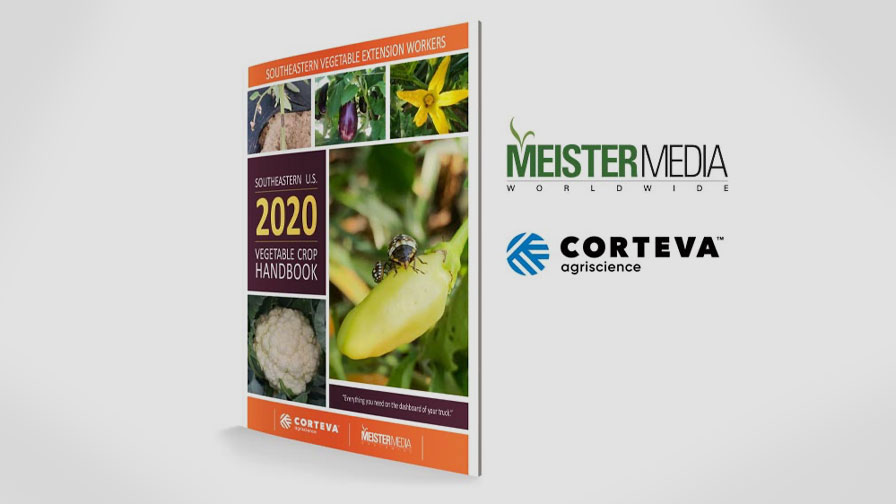Battling Late Season Silk Flies
Corn silk flies can be extremely damaging to Florida sweet corn crops. A total yield loss can be possible in fields if the flies are not controlled properly during the three-week ear stage. The adults deposit eggs mostly at protected places at the tips of the ears and fly larvae can feed throughout the ears on corn silks, cobs, and kernels.
“I would consider corn silk flies to be nearly as destructive as the fall armyworm (FAW), another serious pest of sweet corn throughout Florida,” says Gregg Nuessly, an entomologist and associate director of the UF/IFAS Everglades Research and Education Center. “While FAW larvae attack corn from the seedling through the ear stage, and the silk flies cause economic damage only to the ear stage, a single missed insecticide application when flies are depositing eggs can lead to a total sweet corn yield loss for the field.”
Scouting For Trouble
Nuessly says scouting for corn silk flies is very important. All four species of the fly are primary pests of corn and should be controlled. “We have been working for many years to determine an economic threshold for use in initiating insecticide treatment,” he says. “However, we have learned that it is not strictly a presence/absence or numbers game.”
Scouts and growers also need to examine the opening of the silk channel (end of corn ears) for groups of the pearly white, sliver-shaped fly eggs. Individual eggs are about the same length as thrips, but eggs are usually found in groups of five to 30 between the silk strands near the ends of the husks.
“When scouting a field, I recommend searching the ear tips for fly eggs simultaneously while looking for early instar FAW larvae and corn earworm eggs and larvae,” says Nuessly. “Particularly in early winter through early spring, fields may have many flies along the edges of fields, but examination of the ears will result in no eggs.
“We do not yet understand why we don’t always find eggs when we find adults, but the point is that presence of flies does not always equate with ears infested with eggs or larvae. Presence of both flies and eggs is a signal that conditions are right for fly infestation and insecticide treatments should be initiated without delay.”
Some fields may require multiple treatments during the crop, while others may not. Due to the short residual activity of effective insecticides for fly control, chemistries may have to be applied as frequently as every two days during the ear stage to combat resistant flies and those re-infesting treated fields from nearby reservoirs, particularly neighboring untreated fields of all crops, including sugarcane. As the spring sweet corn season draws to an end, the growing silk fly population tends to congregate in the remaining fields making frequent insecticide applications nearly mandatory to prevent serious economic losses.
Guard Against Resistance
An emerging challenge is the development of corn silk fly resistance to pyrethroids, which is the go-to tool for growers. “Over the last 20 years, pyrethroid use for fly control has increased as label rates of other effective insecticides (e.g., chlorpyrifos) have been greatly reduced and other effective insecticides have been removed from the market (e.g., methyl parathion and endosulfan),” says Nuessly. “We saw the beginning of resistance to pyrethroids in silk flies 11 years ago. In our 2013 laboratory bioassays, we have demonstrated that one of the four species of silk flies, Euxesta stigmatias, is much more tolerant of pyrethroids than Euxesta eluta. While these flies are initially knocked down by pyrethroids, up to 60% of the E. stigmatias population can recover within four hours. Together with new flies reinfesting treated fields, the pyrethroid resistance issue helps explain many of the problems growers are experiencing controlling the flies.”
Nuessly suggests growers save their pyrethroids applications for later use against the silk fly and use alternative modes of action for pre-tassel FAW control. This will limit the selection pressure for resistance.
“Many other excellent insecticides are available for controlling FAW larvae on leaves and in whorls,” says Nuessly. “But not all insecticides that kill armyworms will kill flies. For example, our tests have shown that currently labeled insecticides in the IRAC groups 5 and 28 can be very effective against FAW, but have limited to no effect when it they are sprayed directly on the adult flies. Rimon insecticide (novaluron, Chemtura AgroSolutions) has worked very well in trials against FAW over the last several years. It also is a different mode of action to take pressure off pyrethroids.
Insecticides in the carbamate, organophophate, and pyrethroid groups have the greatest effect on flies.
In general, corn silk fly resistance to a pyrethroid followed the length of time it has been labeled for use in sweet corn — flies were most resistant to the products that had been labeled the longest. “I recommend rotating among products best used for FAW so that products effective against both FAW and silk flies will be more effective when needed during the ear stage,” says Nuessly.










